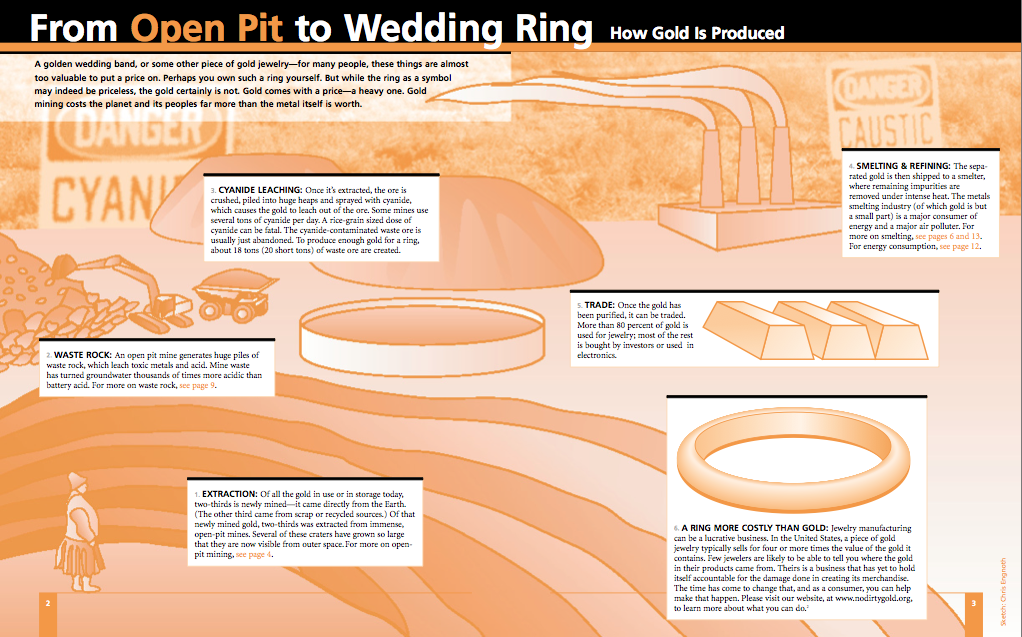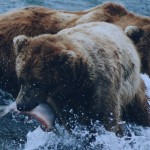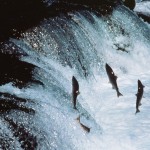According to the Ecosystem-Based Management Tools Network, ecosystem-based management (EBM) “considers the whole ecosystem, including humans and the environment, rather than managing one issue or resource in isolation.” But one of the key aspects of EBM is listed as “Incorporating understanding of ecosystem processes and how ecosystems respond to environmental perturbations.” When it comes to Sockeye […]
Category Archives: Science
Holistic Management for Complex Salmon Systems
As discussed in an early post, salmon play an extremely important role in supplying nutrients and energy to both freshwater and terrestrial ecosystems. The article “Pacific Salmon in Aquatic and Terrestrial Ecosystems” describes this role in more detail and discusses management and conservation considerations. Salmon runs provide a massive amount of biomass to inland streams. […]

Mining under the Microscope
The protests against the Pebble Mine are not exactly unfounded. Historically mines, especially gold and copper mines, have been very destructive to the environment and the people who rely on them. Earthworks and Oxfam America published a report on the negative effects of mining called Dirty Metals: Mining, Communities and the Environment. Included in the beginning of the report is the diagram of the gold mining and refining process seen below.
The processes behind the mining of copper and gold are not at all efficient. The report states that only .51 percent of ore mined for copper is actually usable metal, and only .00001 percent of ore mined for gold. But it is not only the inefficiency of mining these metals that leads to environmental degradation. It is estimated that mines in the United States are responsible for more than 90 billion tons of waste ore. The chemicals involved in the process are dangerous for the environment too. The way that gold is extracted is by spraying cyanide, which bonds with the gold, onto crushed ore and then chemically separating the two. The remains of this process are called tailings, a mixture of crushed rock, water, and chemicals. These tailings are stored in on-site tailing dams, which are often structurally unsound. Tailing dam failures are responsible for about 75 percent of major mining accidents over the past 25 years.
Considering all of these threats, and the fact that it takes only 1 millionth of a gram (or 1 microgram) of cyanide per liter of water to kill a fish, the people who rely on the rivers near the Pebble Mine have a right to be concerned. Mining is not an industry that has a history of low environmental impact, and despite promises the Pebble Mine has the potential to cause severe damage to the Sockeye Salmon runs in Bristol Bay.
References
http://www.oxfamamerica.org/static/media/files/dirty-metals.pdf
http://farm4.staticflickr.com/3774/8904048841_a7834d10ee_o.jpg
Understanding the Importance of Salmon
Bristol Bay is a very controversial area as government agencies are pitted against each other and environmentalists battle with industrialists. The Pebble Mine will provide over 1000 long-term jobs, increasing Alaska’s mining workforce by almost 25%. So why then are the locals so against this development? What makes salmon so special? Pacific salmon are […]
Temporary Block of Bristol Bay Mining
On March 5, 2014, the EPA used its “veto authority” from Section 404 (c) of the Clean Water Act to temporarily block mining permits. For the past three years, the EPA has been studying the potential impacts of the proposed Pebble Mine on the Bristol Bay ecology, especially the salmon. The EPA released the final […]
Scientists Compose Collective Letter Against Mine
Recently a group of 360 scientists endorsed a letter asking the United States Environmental Protective Agency’s Administrator Gina McCarthy to shut down plans for the creation of the Pebble Mine in Bristol Bay Alaska. This letter is one of many collaborated efforts to stop the possibility of placing a large scale open-pit mine in […]
The Pebble Mine Threat
In order to understand the controversy surrounding the proposed Pebble Mine in Alaska, we must first understand the potential threats the mine poses. As pointed out by Kelly J. Cunningham in her Master’s thesis Bristol Bay and the Pebble Project: Red or Gold?, the most important potential victim of the mine is the wild Sockeye salmon. […]





